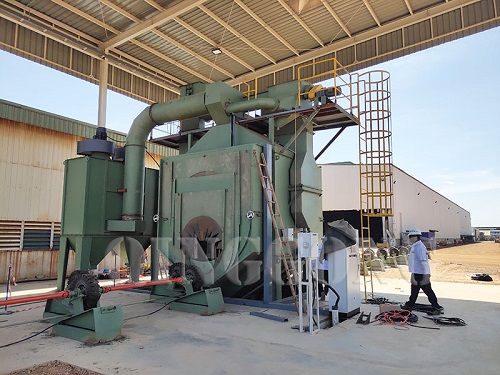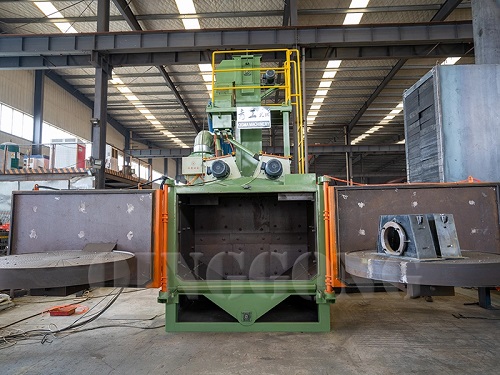Metal shot blasting uses the high-speed rotating flywheel to throw a shot with a diameter of 0.2-3.0mm to the surface of the workpiece by centrifugal force to achieve a certain surface roughness, or to improve the welding tensile stress of the workpiece to be compressive stress and increase the service life of the workpiece.
Compared with the shot peening process, the shot blasting process has different jet power, but the effect is basically the same; similarly, the metal shot blasting cannot completely clean up the oil stains.
Features of metal shot blasting:
1. Shot blasting is more efficient than shot peening, which is economical, and easy to control efficiency and cost;
2. Shot blasting is not as flexible and precise as shot peening;
3. There will be dead corners in shot blasting, and batch processing of workpieces with a single shape is generally used.
Purpose of metal shot blasting:
Shot blasting can prevent parts from remaining high tensile stress on the surface, and generate compressive stress to improve their fatigue strength.
Scope of application:
Generally, the steel parts whose operating temperature exceeds 260℃ and the aluminum parts whose operating temperature exceeds 170℃ are no need for shot blasting. Because the operating temperature is too high, the compressive stress generated by shot blasting will be eliminated and the expected effect will be lost.
Metal blasting process:
1. Selection of types of shots
(1) The hardness of cast steel shot is generally HRC40~50. When processing hard metals, the hardness can be increased to HRC57~62. Cast steel shots have good toughness and are widely used, and its service life is several times that of cast iron shots.
(2) The hardness of cast iron shot is generally HRC58~65, which is brittle and easy to break, and has a short life. It is widely used, mainly on occasions where the shot blasting strength is high.
2. Choice of the shot size
(1) The shot particle size is generally selected between 6 and 50 mesh. The higher the requirement of the shot strength, the larger the shot particle size.
(2) The choice of shot size is also limited by the shape of the part being shot blasted, and its diameter should not exceed half the inner diameter of the groove. Generally, the larger the shot, the greater the impact energy, and the greater the shot blasting intensity, but the coverage of the shot blasting is reduced. Therefore, it is advantageous to reduce the size of the shot as much as possible under the premise that the required shot strength can be produced.
3. Selection of hardness of the metal shot
Generally, the hardness of the shot is greater than that of the part. When the hardness is greater than the hardness of the part, the change of the shot hardness value does not affect the shot blasting strength. Conversely, a decrease in the shot hardness value will reduce the shot blasting strength.
4. Selection of injection speed
As the speed of the shot increases, the strength of the shot increases. However, too high speed will increase the amount of shot blasting broken, and then the shot blasting consumption will increase.
5. Adjustment of the blasting angle
In the vertical state, the shot blasting intensity is the highest, so shot blasting is generally performed in this state. If limited by the shape of the part, the shot blasting speed should be appropriately increased when the shot blasting must be performed at a small angle.
6. The amount of the broken metal shot
The shot blasting strength of the broken shot is low, so the broken shots are often removed, and the complete rate of shot blasting must be at least 85%.
7.Metal shot blasting time
The amount of the metal shot blasting time depends on the shot blasting effect of the workpiece during the shot blasting process. The principle is to achieve the required shot blasting strength.
 EN
EN
 fr
fr  de
de  es
es  it
it  ru
ru  pt
pt  ar
ar  th
th  pl
pl  ro
ro 


